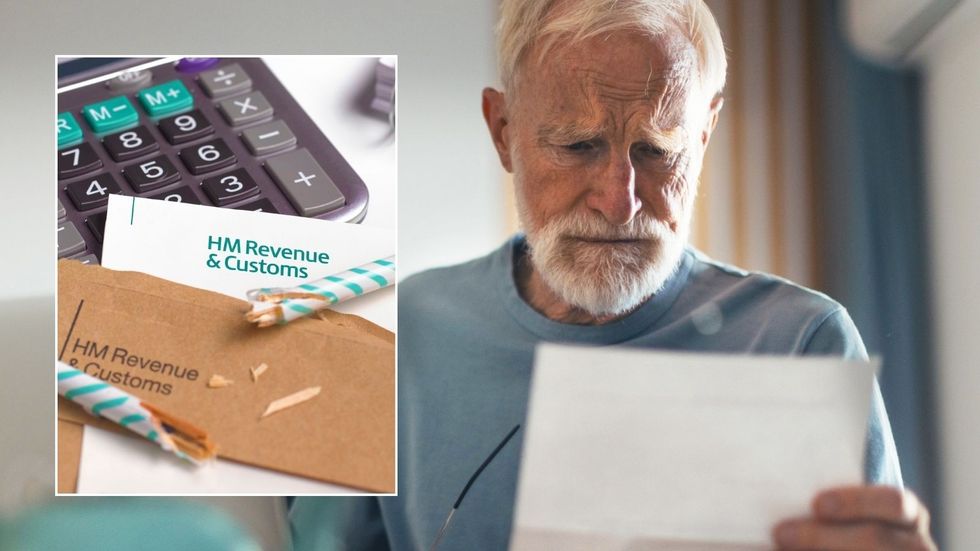Britons have been urged to claim their pension tax relief before an imminent deadline that could see them cash in on “thousands of pounds”.
Self-employed and higher earners need to submit their return online by January 31 to avoid any penalties from HMRC, as well as to claim a much needed pension boost
Dean Butler, Managing Director for Retail Direct at Standard Life, part of Phoenix Group said: “The deadline for filing self-assessment tax returns is fast approaching, with paperwork needing to be submitted online by midnight on January 31.
“So, if you’re one of the categories of people who needs to send a tax return – for example if you’re self-employed or earning a taxable income of over £150,000 from employment or other sources – then now is the time to act.
 Britons are urged to submit their tax returns on time to avoid “a nasty tax surprise further down the line”GETTY
Britons are urged to submit their tax returns on time to avoid “a nasty tax surprise further down the line”GETTY “Tax returns aren’t known for being fun, but it’s important to understand what’s required and file it on time to avoid any penalties which can be costly – last year, HMRC collected a record £220 million in late-filing fines.”
Those who earnt over £50,271 a year in the last tax year and fail to complete a self-assessment tax return risk missing out on valuable tax relief on pension contributions.
Anyone with a pension receives 20 per cent tax relief on every contribution they make, and this is added automatically. However, unless they’re using salary sacrifice to make pension contributions, higher rate taxpayers might need to claim the extra 20 per cent of tax relief they are entitled to.
This will then be repaid via a tax rebate, a change in tax code (which will mean they’ll pay less tax the following year) or a reduction in their tax bill for the current year.
Those who are not sure whether they’re contributing via salary sacrifice, can ask their employer to help.
Butler said: “Higher rate taxpayers should complete a self-assessment return every year they’ve paid higher rates, and anyone that hasn’t done this may have built up unpaid tax relief in arrears.
“It’s worth investigating if you think this applies to you, as you can make claims for up to four previous tax years, meaning you could be owed thousands of pounds from the government.
“HMRC doesn’t tend to prompt non-self-employed people to submit a self-assessment, so any higher rate taxpayers who pay their tax through PAYE need to actively request to submit a tax return.”
What is self-assessment and who needs to submit?
Those who are self-employed or receive any other income, will need to submit a self-assessment tax return each year to pay income tax and National Insurance.
They will need to file a self-assessment if, in the last tax year (6 April 2023- 5 April 2024):
- They were self-employed as a ‘sole trader’ and earned more than £1,000 (before taking off anything they can claim tax relief on)
- They were a partner in a business partnership
- They earned £150,000 or more
- They had to pay Capital Gains Tax (CGT) when you sold an asset that had increased in value
- They had to pay the High Income Child Benefit Charge
Butler warned: “Make sure to check you tax code is correct before submitting your self-assessment. If you need assistance with your self-assessment, then you can contact HMRC, or find an accountant accredited in the UK to help, which can be relatively inexpensive. You can also appoint a relative or friend to fill in and send your tax return on your behalf.”
Once a person begins completing a self-assessment, they will be required to continue submitting one each year, unless they inform HMRC that they no longer need to do so.
For higher earners, understanding the tax return is especially important because there is a chance they may have exceeded their annual pension allowance, which they are responsible for reporting.
The annual allowance is the maximum amount a person can contribute to their pension each year while receiving tax relief, and for most people, this limit is £60,000.
However, if someone has started accessing their pension beyond the tax-free cash, their annual allowance will drop to £10,000.
Additionally, if they earn £200,000 or more, their allowance may be reduced further through a process called ‘tapering,’ potentially lowering it to as little as £10,000
How do you submit a tax return?
People will need their Government Gateway user ID and password to register for online self-assessment. If they don’t have a Government Gateway account, they can create one when they first visit the self-assessment section of the HMRC website and sign in.
Users will be prompted to set up a user ID and password, and then they’ll be sent a 10-digit Unique Taxpayer Reference (UTR) number in the post.
Butler added: “You’ll also be sent your activation code, which can take up to ten days to arrive. You need to activate your account within 28 days of the code arriving, or it’ll expire. You’ll then be able to use the HMRC online service to submit your return. Alternatively, you can send your tax return via post.”